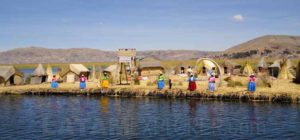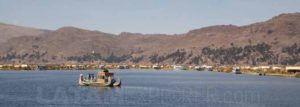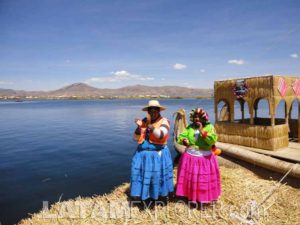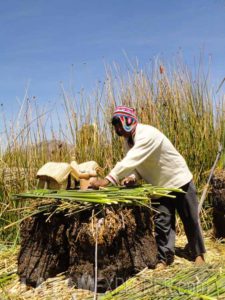Home > Destinations > Peru > Puno
Puno and the Titicaca Lake, Peru
Puno is one of the largest cities in the Peruvian altiplano, with an estimated population of about 150,000 inhabitants. While it is true that Puno is far from being the most beautiful city in Peru, its location on the shores of Lake Titicaca and near the border with Bolivia, still makes it one of the most visited destinations in the country.
The city of Puno is located about 3,820m (12,530ft) above the sea level. For this reason, its climate is much cooler than what could be expected from a place in this latitude. In fact, it is very common for nights and winter mornings to reach below freezing temperatures, although the weather is generally quite dry (except between December and February) and the effects of the exposure to the sun are intense. Those arriving directly from low altitudes may, by the way, find it a good idea to take it easy during the first 2 or 3 days on the altiplano, leaving some time for the body to acclimatize.
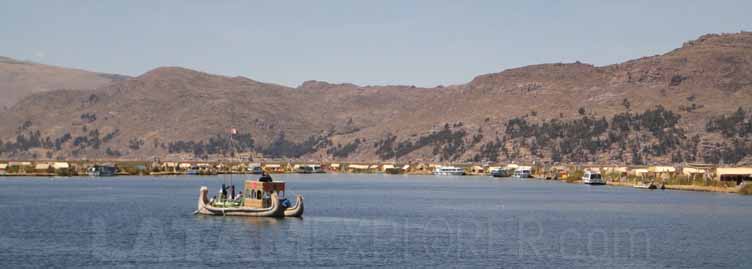
Due to the relative lack of attractions within the city limits, your time will be possibly better spent using Puno just for accommodation and getting out to the surroundings for the day. Those interested in the history of pre-Incan civilizations will probably be interested in visiting Sillustani. This is a small archaeological site about 35km (22mi) away from Puno, where you can observe a number of tombs in the form of inverted cones built by the Kolla culture (1200-1450AD).
The vast majority of visitors to Puno, however, prefer to use the city as a base for exploring Lake Titicaca, the highest navigable lake in the world. Once in the city, it is quite easy to organize a tour of the lake’s islands. These tours usually require between half and two days, although longer programs are also possible. The most sought-after destinations in these itineraries are the Uros Islands, Taquile Island and Amantaní Island.
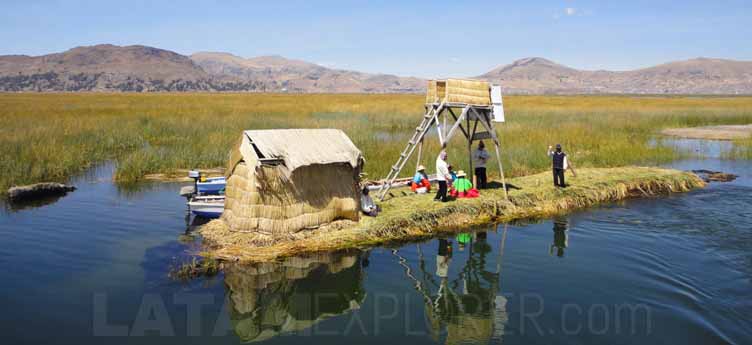
The floating islands of the Uros are a collection of artificial islands built of Totora (an aquatic plant native to the Titicaca area), usually near the coast of Puno. The Uros, who inhabit these islands, are descendants of a people who lived in this region since ancient times and still subsist of activities related to the lake, mainly giving several uses to the totora, which besides being used to build and renovate the islands themselves, are also employed in the construction of houses and handicrafts. The Amantaní and Taquile islands are the largest on the Peruvian side of the lake, with an area of 9.3km² and 5.7km² (3.6sq. mi and 2.2sq. mi) and are located respectively some 35km (22mi) and 40km (25mi) away from Puno. Both islands allow for a close contact with the local people, who basically survive thanks to the agricultural activity and, recently, has welcomed some additional income originated by tourism - Taquile is slightly more visited than Amantaní. Both islands still don’t have cars and electricity is not yet widespread among its inhabitants, although it is available at some places. The floating islands of the Uros can be reached in a 20 to 30 minutes navigation from Puno’s pier, while Taquile is about 2h30 away. A visit to Amantaní usually involves spending a night with a local family (there are also 2 small hostels and a villa on the island for those seeking extra comfort) due to the schedule of the boats; the island is about 3 hours from Puno and 1h from Taquile.

The nearest commercial airport is in Juliaca, about 50km (30mi) north. This is the largest city in the region, although irrelevant for tourism. From Puno you can also take a train to Cusco, gateway to the Sacred Valley of the Incas, 3 to 4 times a week. In addition, buses connect the city with Cusco (390km / 240mi; 6h), Arequipa (310km / 190mi; 5h), Lima (1,310km / 815mi; 20h) and La Paz, in Bolivia (260km / 160mi; 5h).

